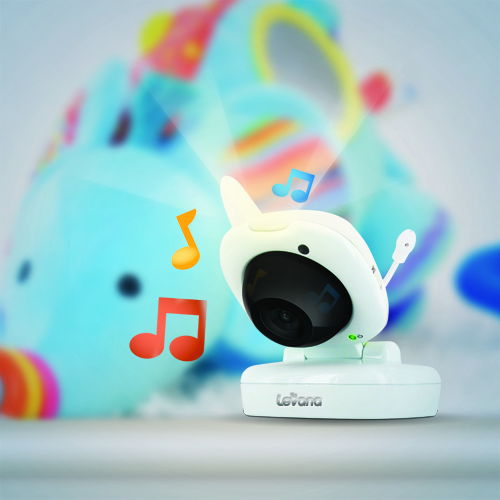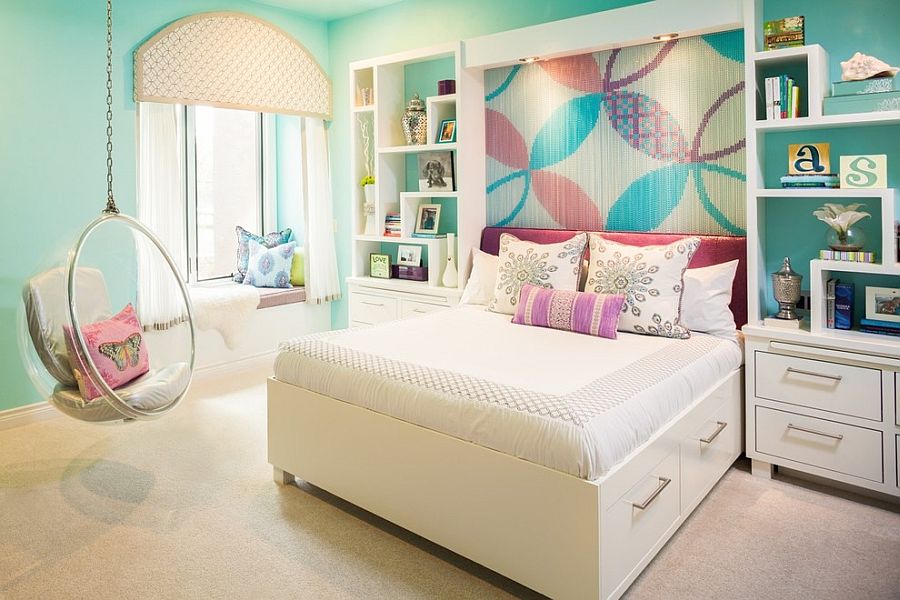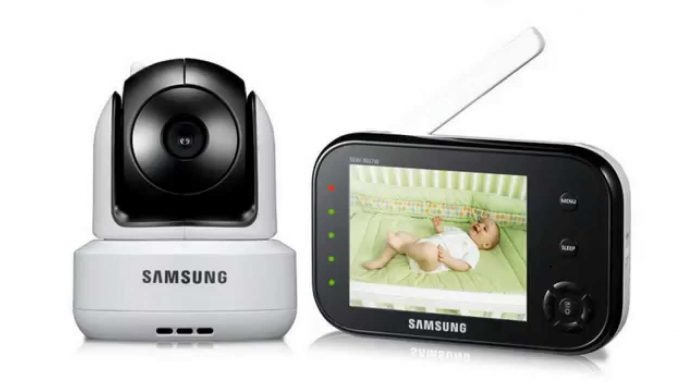When my family moved from an apartment to a house, we realized we would need high quality baby monitors. Our master bedroom is on a different floor from our children’s rooms, and our inexpensive Safety First baby monitor couldn’t penetrate the thick cement floors. A new baby monitor was a high priority on our “To Buy” list.
Sharper Image Video Monitor
We decided to get a video monitor from Sharper Image, which has a setting to switch back and forth between our children’s rooms. The Sharper Image Wireless Security Camera and Monitor with 2.5-inch Color TFT Active matrix LCD, has a swiveling transmitter. it also has infrared night-vision capabilities, so we can watch our kids as they sleep. Or, toss and turn. Or, stand up in the middle of their bed and yell, “Mommmyyy!”
This is an expensive video baby monitor, but it promised to work through the ceiling/floor of our home. We also justified the price by noting that we’d only need one monitor for both kids’ rooms: A setting allows the video receiver to switch back and forth between rooms. Unfortunately, the Sharper Image video baby monitor has quite a bit of static, so at night our bedroom sounds like that archetypal scene from Poltergeist, when the little girl stares at the staticky TV screen. Further, each time the monitor switches receiving images from one bedroom to the other, it does so with a discernible “Zot!” sound. What with the static and the “zot,” us parents were sleeping about as well as if our children were actually keeping us up, which they usually weren’t.
Philips Electronics Baby Monitor
For a couple of years, we’ve dealt with this problem, but now Philips Electronics’ Domestic Appliance division is selling a new Digital Baby Monitor (available September 2006). Each monitor has a base for the child’s room, and two receivers, presumably one for each parent. They are mobile, durable, and travel well. More importantly, the Philips Digital Baby Monitor has a zero – yes, zero – static interference guarantee! This is due to the new Digital Enhanced Cordless Telecommunications, or DECT, technology.

Would Philips hold up to its guarantee? In a word, yes. There is absolutely no annoying static emanating from our receivers. It is quite literally static-free. Further, the receivers are smaller than those of Sharper Image, and readily mobile. The sound quality is amazing; when one of our kids call, it’s as if we’re in the room with them. Even better, this is a two-way system. In other words, if we press a button on our receiver, we can communicate with our children, walkie-talkie style. Considering the flight of stairs that would otherwise have to be scaled in the middle of the night, this is a real labor saver. Take one on a vacation; the two-way system makes luxury hotel suites even more fun!
Step Children‘s Bedrooms – Private Space & Shared Rooms for Kids
Newly blended families need more bedrooms, more bathrooms, and more shared family areas than other families. Unfortunately, anyone who has been divorced has taken a big financial hit, so remarried couples cannot help their children as much as they would like. In a perfect world, each step-sibling would have his or her own room, but sometimes children must share.
Privacy Crucial for a Blended Family
A parent’s remarriage (or re-partnering / living together) is always a bit of a jolt for the kids. Children need time to come to terms with the new situation and accept the new stepparent and new stepbrothers or stepsisters. So, every child needs a space where he or she can be alone, to retreat, regroup, and relax.
In the article “Privacy is Crucial in House Built for a Stepfamily,” psychologist Judith Wallerstein says, “The house should permit solitude, friendship and intimacy, and not impose it.” Not many families can design and build their own house, but all families should be able to incorporate some of the following ideas.
Personal Privacy
If possible, each child should have his/her own bedroom, though this is less important for youngsters than for teenagers who need this psychic space. Having a place in the house is like having a place in the family.
Areas to convert to bedrooms:
- Dining room
- Den/office
- Garage
- Formal living room
- Two-Bathroom House
In “House Hunting for the Blended Family”, family therapist Shirley Dudley says that, “It’s important to have separate bathrooms, if possible, for the boys and the girls. Adequate bathrooms are actually more important than the number of bedrooms.”
One idea for freeing up a bathroom is to put a vanity (sink, mirror, and storage) in another area of the house, like the laundry room. That way a teenage girl has a place to wash her face, blow dry her hair, and put on makeup without creating morning havoc.
Design Ideas for Apartments
Parents who live in apartments do not have the same options as those in a suburban home.

In “Blended Families Work to Stretch Their Spaces” on ocala.com, psychologist Anne Bernstein says, “You can create little enclaves, carve out nooks, rearrange furniture – there are lots of creative ways to make a special area for a child.” Bernstein feels that children who live in a home part time do not need an “exclusive space” although they need a “private space”.
Children’s Bedroom Arrangement
If children share a room, there are ways to give them a sense of ownership. Let each child chose the paint color and linens for his or her half of the room.
Partition a bedroom and create a boundary by using:
- A Japanese rice paper screen
- A wood veneer partition, like those used for office cubicles
- Wooden blinds or fabric shades that draw up to the ceiling
Interior designer suggests using 2 built-in high platform beds, attaching curtains around the space under the beds for privacy, and putting a desk and storage in the nook under each bed.
Weekend Custody
When a step-sibling lives with a family part time or on weekends, that child has different issues than a child who is around full time. Weekend step-siblings might not need half a bedroom however, they need:
- A permanent place in some room that belongs to them.
- Family photographs or posters on the wall to “claim” that part of the house.
- A closet or storage area where they can safely lock up possessions and know that their toys or clothes will not be disturbed while they are living elsewhere.
Family Areas
Sleeping areas are not the only concern for stepfamilies. Every house or apartment needs a central gathering point, such as an eat-in kitchen or family room. The difference, with stepfamilies, is that they need to have another smaller “public space” where two or three people can speak in private.
All of the family members must have their own space in a newly formed stepfamily. This is what will help each child feel wanted and loved.



